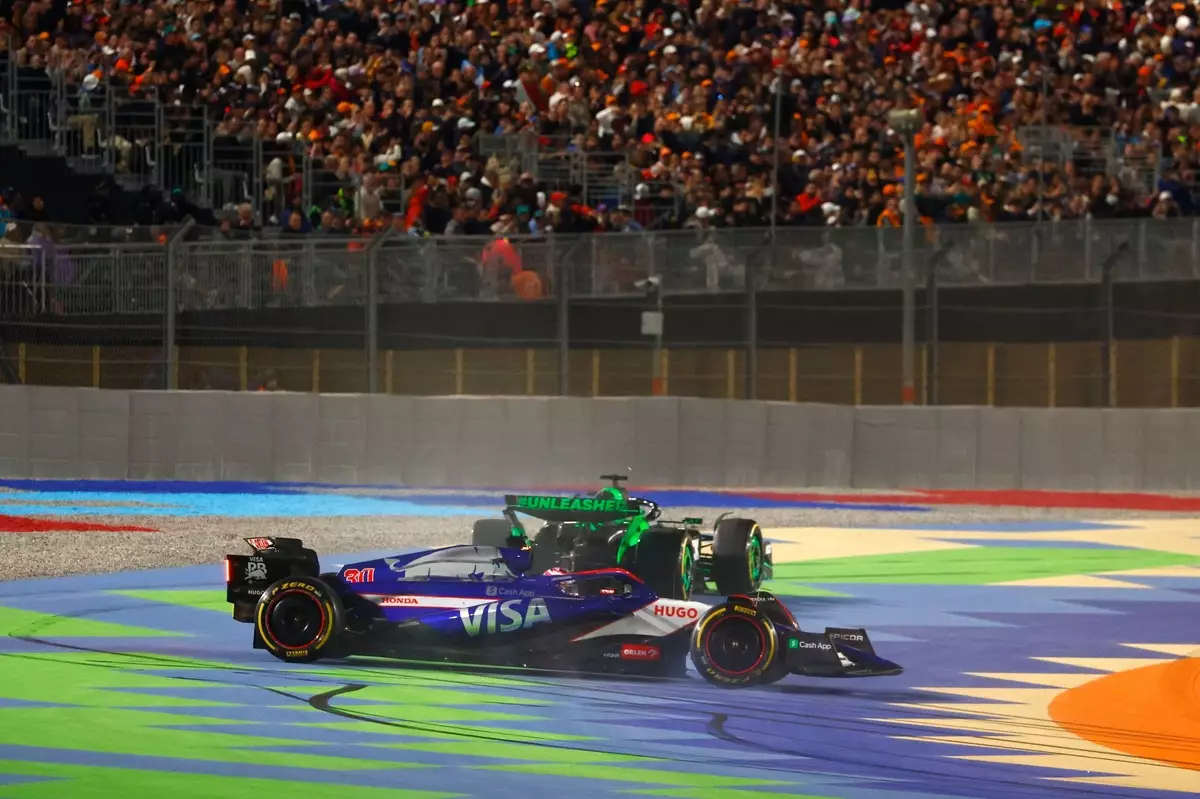In the high-stakes world of Formula 1, split-second decisions can lead to significant consequences, both for the drivers involved and their teams. The recent incident during the Qatar Grand Prix, where Liam Lawson collided with Valtteri Bottas, offers an opportune moment to reflect on accountability and the complexities of racing dynamics. Lawson, a rookie driver for Red Bull, openly took responsibility for the incident that ultimately hampered Bottas‘ quest for points during a challenging season for the Sauber team.
Bottas, who is poised to leave Sauber at the end of the current season, has faced a plethora of challenges throughout 2024. Despite his experience as a driver who has seen success in previous seasons, he has yet to secure a top-10 finish this year. The Sauber team, however, has recently introduced a floor upgrade that has increased their competitiveness, particularly in the latter part of the season. This upgrade is significant, especially as the team aims to maximize their performance before the season concludes.
The incident occurred shortly after the first safety car restart on lap five, when Lawson, struggling with tire control, inadvertently pushed Bottas off the track during a critical point in the race. Lawson admitted to misjudging the situation, stating he believed his tires were in optimal shape. Unfortunately, as he attempted to make a move, he found himself sliding toward Bottas, resulting in a collision that left Bottas recovering in 11th place—a position that did not reflect Sauber’s potential going into the race.
This moment of miscalculation not only affected Bottas’s race but also highlighted the psychological pressure that new drivers like Lawson face while competing against seasoned racers. Lawson’s candid acknowledgment of his misstep underscores the imperative of driver accountability but also reveals the mental toll racing can exert during pivotal moments.
Bottas’s reaction to the incident paints a picture of the frustration that has become all too familiar this season. He articulated the feeling that everything has worked against him, especially citing the circumstances surrounding Lawson’s error. The frustration is compounded by the significant pre-race strategy that Sauber had devised—if one driver took the lead, the other would follow a complementary strategy to maximize their chances. Instead, Bottas found himself on the defensive after the collision, losing critical track position.
This season has been a difficult one for Bottas, becoming the only driver to complete all 23 races without scoring a single point. As a veteran, he knows that the impermanence of racing fortunes means that every race is an opportunity. The tone of his reflection suggests a deep-seated desire for redemption, particularly with only one race left in Abu Dhabi. Bottas hopes that the improvements made within the team will paves the way for a more favorable outcome.
As Sauber hopes for a stronger showing in the final race, Bottas himself channels his frustration into determination. He celebrated Zhou Guanyu’s success in securing the team’s first points of the season, which serves as a morale booster for the team. The shared experience of racing demands unity and resilience among teammates, essential qualities that define successful teams in the competitive environment of Formula 1.
Lawson and Bottas‘ incident serves to remind fans and participants alike that racing is as much about teamwork and strategy as it is about individual skill. The fallout from single incidents can ripple through an entire team’s performance, illustrating the interconnectedness of drivers on the track.
The dynamic between rookie mistakes and veteran perseverance unfolds on a stage that captivates millions. The upcoming race in Abu Dhabi will not only be a final chapter for Bottas’s tenure with Sauber but also a crucial moment for Lawson to learn and grow as a driver. Both men will carry the lessons of the Qatar Grand Prix into this final race, highlighting the ever-evolving narrative that is Formula 1 racing.


Napsat komentář